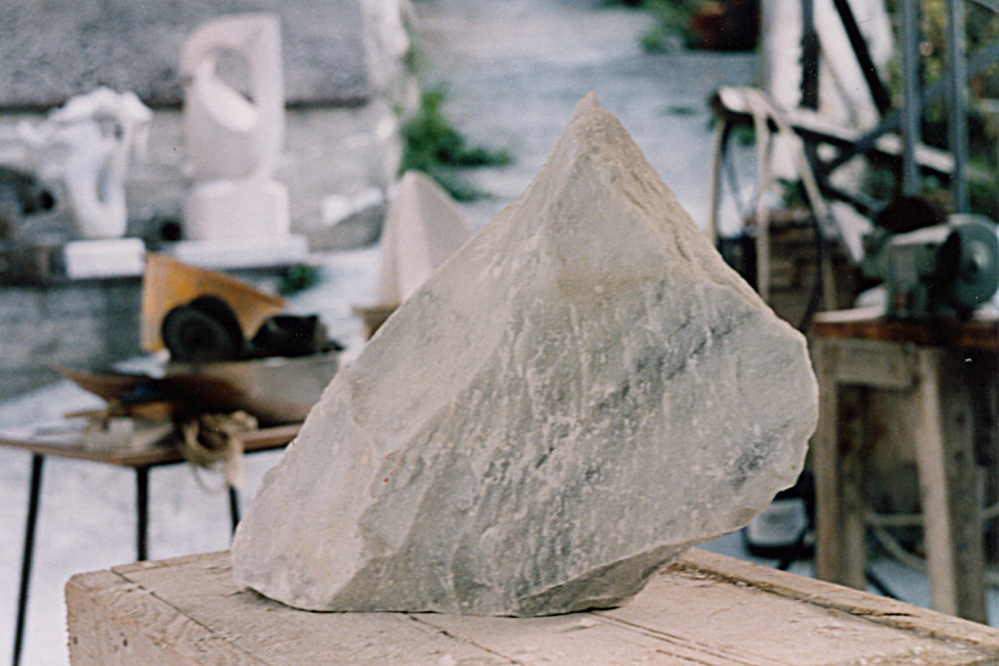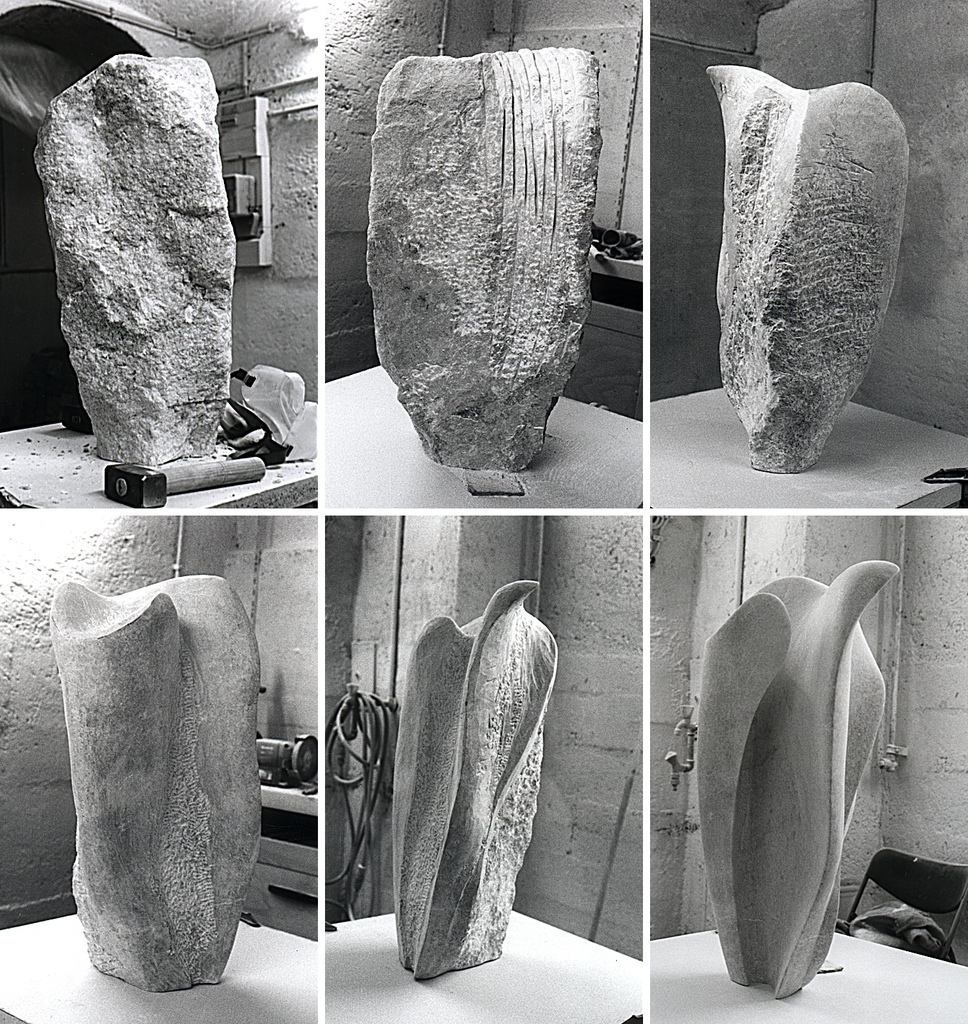
Unlike modelling where clay is added and removed until you are happy with the work, it isn’t possible to put bits back onto a carved stone. What’s gone is gone!
This seems like something that is daunting but it needn’t be. Stone carving is a lot like life. Each stone is a challenge. It has its own character and leads to a new aesthetic statement. Through an intensive dialogue with the stone while working with it, it’s possible to bring out what is hidden within.
While studying sculpture, I worked mainly figuratively in clay. In 1998, I attended an extensive 2 week marble carving course in Carrara, Italy. It was the end of August and very hot. It was inspiring because the group was made up of artists and because the course was held in the mountains a 20 minute walk outside the town. Then there was the stone. There was marble everywhere. What better way to begin this part of my journey than in the very mountains Michelangelo walked over 400 years ago to find the right stone. (Well, it could be that his actual mountain is gone. Through the marble trade, mountains were systematically taken down. At one point, the Italian government decided that the panorama could no longer be destroyed. Now, the mountains are literally hollowed out.)
So, these conditions made the perfect working environment. Where to start?!
Visions in Stone
So, how is it possible to bring a form out of a raw stone? That is perhaps the most fundamental question when starting a stone carving. The simple answer is that you have to find your way. With my first stone in Carrara, I tried to envisage what was contained within the stone very much like the Canadian Inuit. There are plenty of clues if you have a rough piece rather than a block.

We used the same traditional tools as Michelangelo did, refining as we went along. Many people I have encountered have remarked that I must have incredible patience — not true. Rather, it is exciting to watch the form emerge and refine while bringing out what becomes the final sculpture.
Dinah Andersen, an Inuit artist and now friend I met in Carrara says, “We, the Inuit are known for having a vision when working with stone. For instance, I can look at a piece of raw material and ‘see’ something in it. True or False?? Most Inuit will agree. I look at pieces, see ‘possibilities,’ but sometimes, it does not want to be what I envisioned. The end result speaks for itself.”
Everything is open!
For beginners, soapstone is a wonderful material. It’s softer than marble and comes in a variety of colours.
